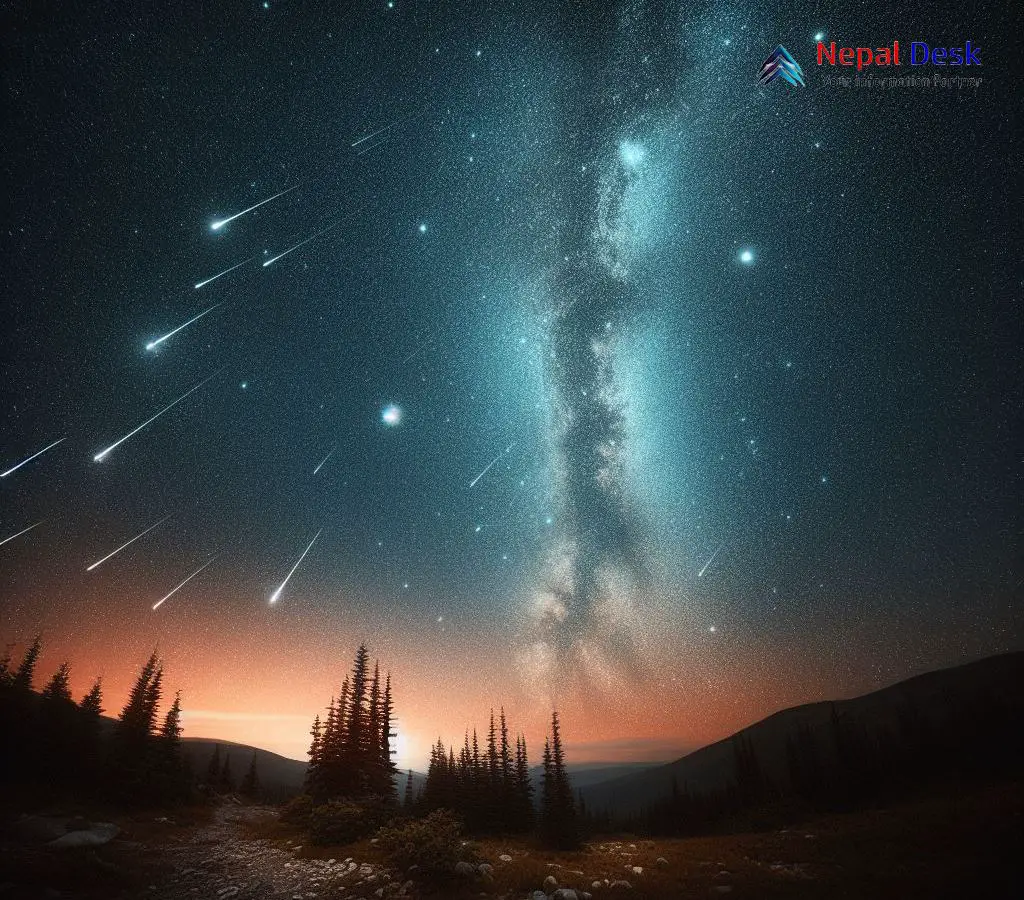Orionid Meteor Shower 2023: A Celestial Spectacle Awaits Tonight
Published Date

Published Date
Tonight, experience the dazzling Orionid meteor shower linked to Halley's Comet. Stargazing tips for Nepal and worldwide #OrionidMeteorShower
⏱ 2 min read
Today, on the night of October 21-22, stargazers in Nepal and across the globe are in for a treat as they can witness the mesmerizing Orionid meteor shower. Known for its stunning display of shooting stars, this annual celestial event typically takes place between early and late October, peaking around the 21st. Astronomy enthusiasts and skywatchers eagerly anticipate this spectacle, which is visible from both the Northern and Southern Hemispheres, allowing people worldwide to partake in the experience. The Orionids are the second meteor shower in October, following the Draconids that peak around October 7 or 8.
During its peak, an average of 20 meteors per hour light up the sky. Although not as abundant as some other meteor showers like the Perseids, the Orionids are cherished for their fast-moving meteors and association with Halley's Comet. In Nepal, the best time to observe this shower starts around 10 PM all the way just before sunrise. Stargazers can get assistance from various apps such as Stellarium, Sky Map, or Sky Safari to determine when and where to look for the best view. These apps offer free versions that can be downloaded on Android or iPhone devices.
The Orionid meteor shower is particularly captivating due to its origin from Halley's Comet – an iconic periodic comet with an orbit shorter than 200 years around the Sun. Completing its orbit every 76 years, Halley's Comet last graced our skies in 1986; nevertheless, its presence can be observed through the Orionids. When approaching the Sun, Halley's ice melts into gas, leaving behind a stream of debris that creates the Orionid meteor shower when Earth crosses its path. Thankfully, no specialized equipment is necessary to gaze at meteors—patience and clear skies suffice.
Consider these essential tips for optimum stargazing during meteor showers:
- Find a dark location, away from city lights and light pollution.
- Consider the moon phase, as its brightness affects meteor visibility.
- Stay warm and dress comfortably in layers.
- Use a reclining chair or blanket to prevent neck strain while skywatching.
- Carry a red-light flashlight to preserve night vision while consulting charts or notes.
- Familiarize yourself with constellations and the shower's radiant point using star maps or apps.
- Exercise patience for the best experience, as meteor showers can be unpredictable.
- Skip binoculars or telescopes since meteors appear throughout the sky.
- Bring snacks and drinks to stay comfortable during your viewing session.
- Share the experience with friends and loved ones for an even more memorable event.
- Embrace late nights; after midnight is often the prime time for meteor sightings.
- Document your observations with a notebook or voice recorder, noting time, location, and other notable occurrences.
- Be mindful of nature by cleaning up after yourself, ensuring future generations can enjoy meteor showers in pristine dark-sky locations.
